Landscape designer Paul Robbins had more than water conservation in mind when he removed the muddy turf and bamboo behind his Pasadena rental and created a welcoming, low-water landscape.
“Our garden is very family-friendly,” says Robbins, gesturing toward the Victorian box tree where his 5-year-old daughter Zara likes to swing. Next to it, a butterfly chair is strategically placed underneath the shade of a towering fig tree. “Audrey likes to sit there and listen to the stone trough water fountain,” he says of his 6-month old daughter. “You can still have a green and lush garden with very little water. Drought-tolerant doesn’t have to look desert-like or stark.”
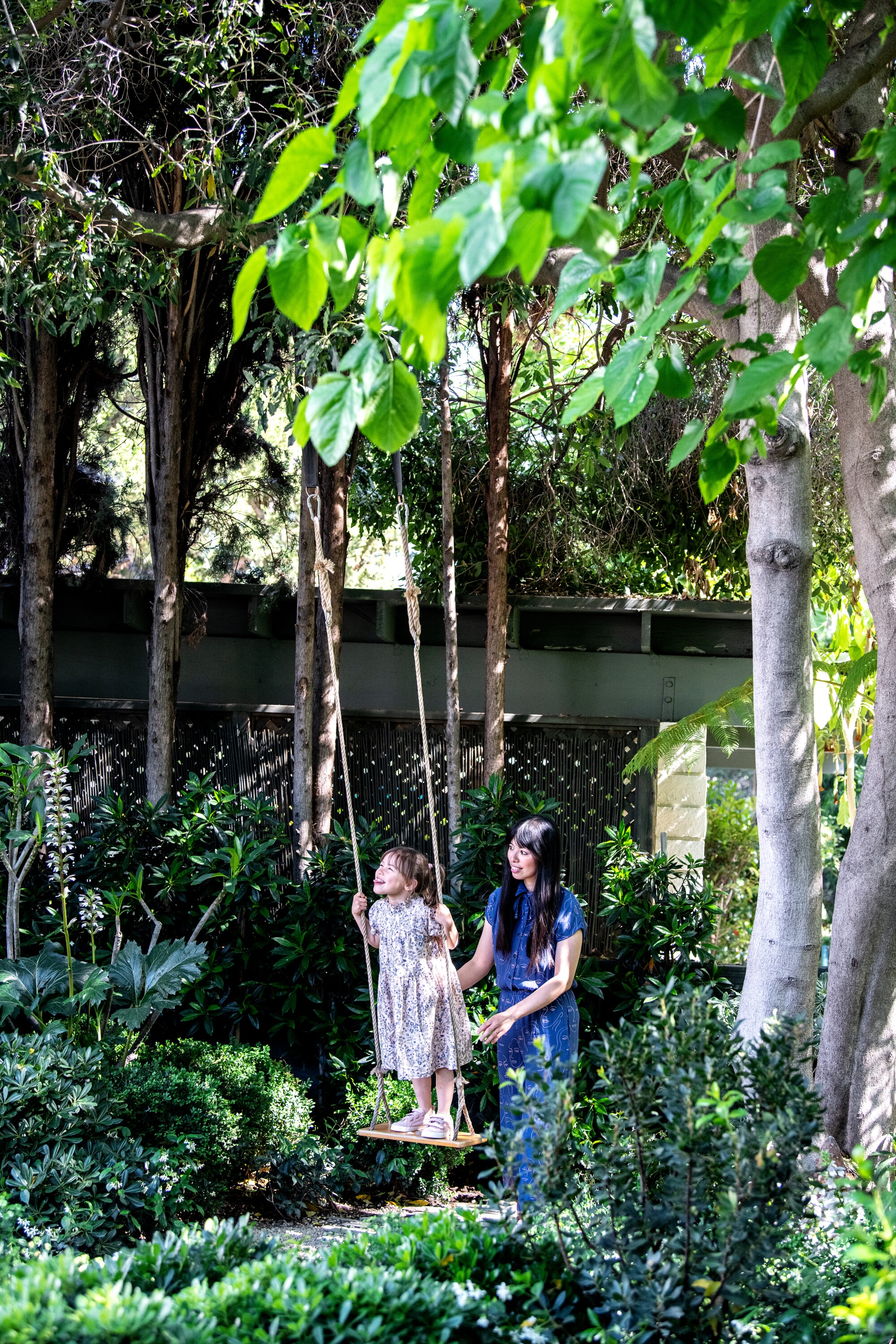
Charlotte Robbins and daughter Zara put in some playtime on a swing.
(Mariah Tauger / Los Angeles Times)
You would expect an Englishman to favor thirsty annuals and perennials, but Robbins says he pivoted to drought-tolerant plants long before the Metropolitan Water District of Southern California declared a water shortage emergency and ordered outdoor watering limited to two days a week. Even so, he thinks gardens should reference the wonder of living in a place like Los Angeles.
“When I create a garden, I want it to feel like you’re in Southern California,” he says. “I love citrus trees, olives and bougainvillea. They will give you the feeling that you’re in a wonderful environment.”
When he and his wife, Charlotte, moved to Pasadena last year, they were excited to find a rental in a family-friendly neighborhood filled with single family homes and majestic live oak trees. They liked the neighborhood’s walkable streets and that Zara’s school is a short bike ride away.
But Robbins had mixed feelings about the 1936 home’s manicured lawn — prevalent on his block — and backyard, which was lined with muddy grass, red bricks and bamboo. “I understand that people put up bamboo as a screen because it grows quickly,” he says, watching hummingbirds and butterflies fly through the garden. “But there is a big downside to bamboo: It doesn’t attract any wildlife.”
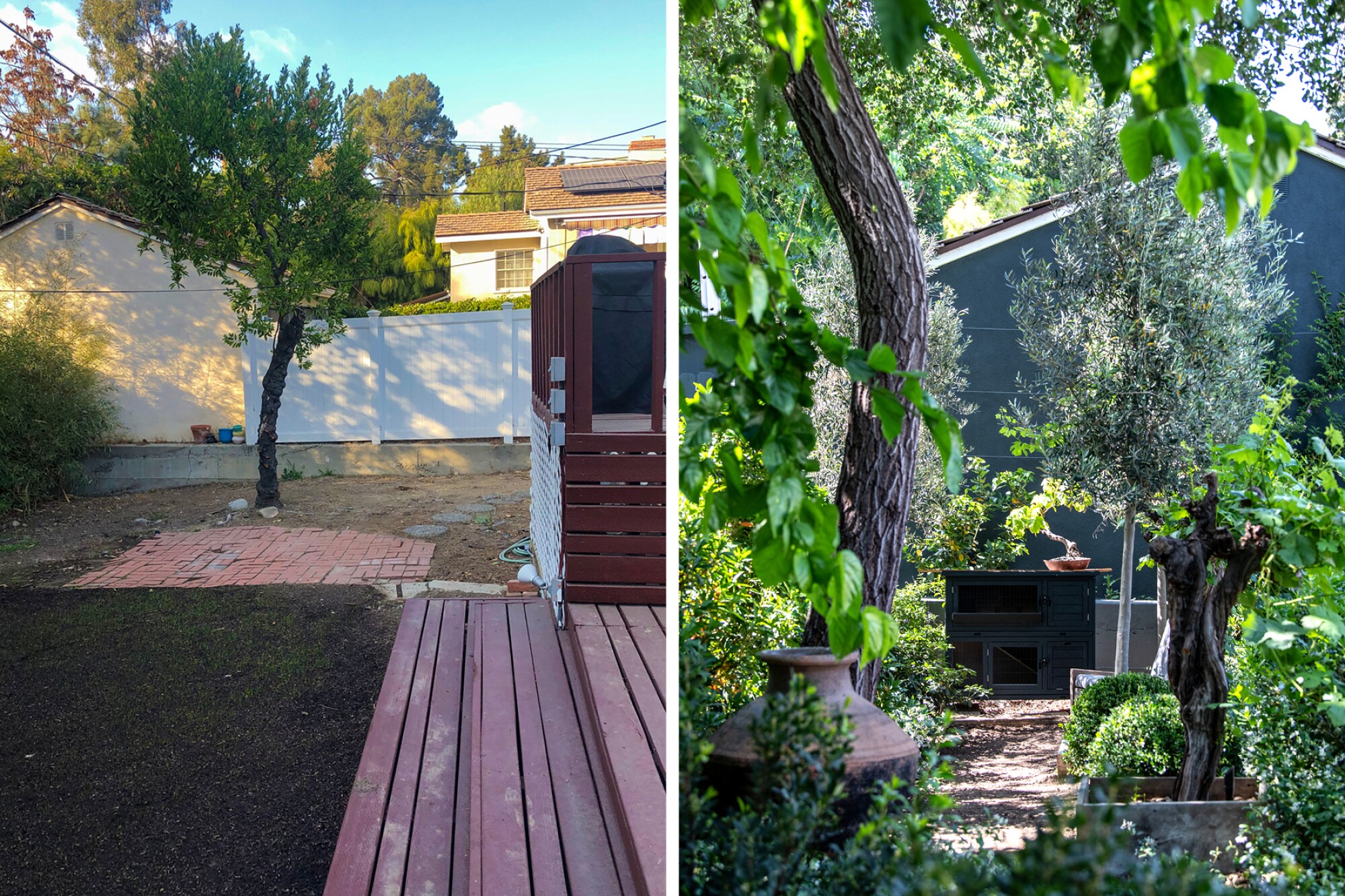
Left: The backyard before it was redone. Right: After the lawn was removed and low-water plants were added.
(Paul Robbins ; Mariah Tauger / Los Angeles Times)
After renting an apartment in Koreatown for several years, Robbins was also excited by the prospect of designing a garden for his family to enjoy.
“Even when we were in Koreatown, he filled our apartment with pots and plants,” Charlotte says with a smile.
Adds Robbins: “COVID-19 made people realize the importance of being outdoors. It feels amazing to have a garden again.”
With his landlord’s blessing, Robbins and a crew removed 2,400 square feet of grass and bamboo by hand in the backyard and installed a new garden over the next four months. Although Robbins did not request a turf replacement from the city of Pasadena, which offers a $2-per-square-foot rebate for replacing turf with drought-tolerant and native plants, homeowners can apply for a rebate for a rental property, according to the SoCalWaterSmart website. Robbins estimates he spent around $25,000 to $30,000 in labor, materials and plants but doesn’t regret investing his own money on someone else’s home as his family won’t be moving anytime soon.
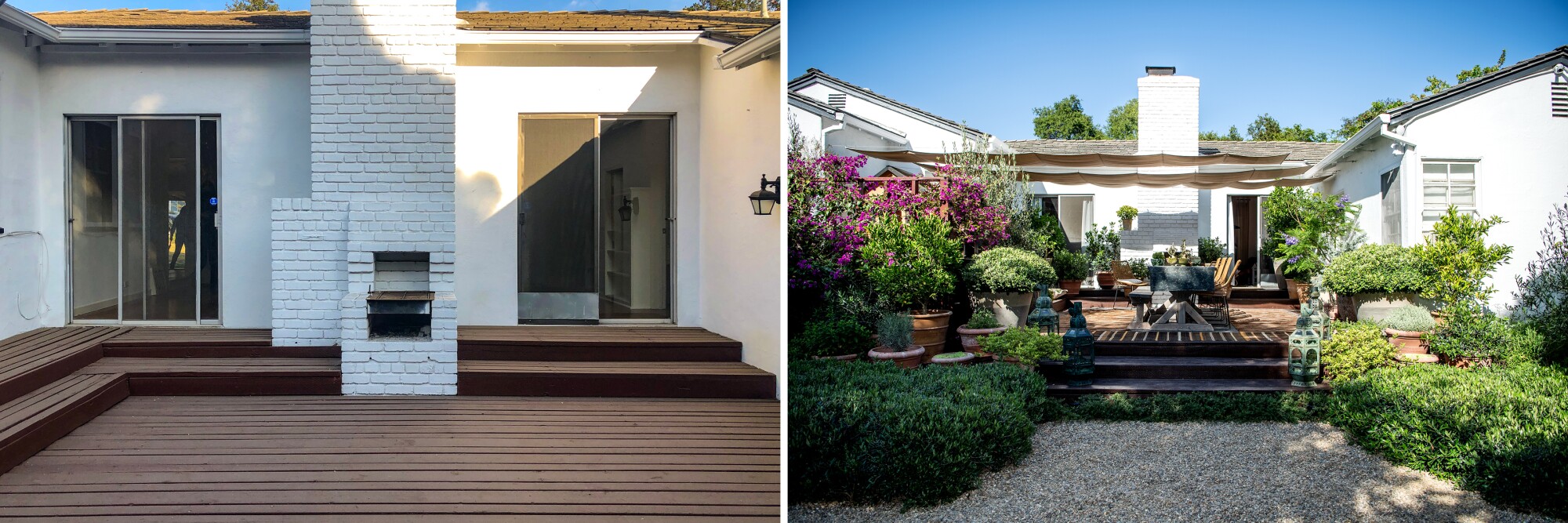
Left: The deck before it was transformed during the backyard makeover. Right: What the deck looks like now.
(Paul Robbins; Mariah Tauger / Los Angeles Times)
Soon after he removed the turf and bamboo, Robbins created a plant plan and mapped it out in the dirt with spray paint. He then added compost-heavy custom soil from Whittier Fertilizer and 3/8-inch Lodi gravel from Bourget Bros. “It’s the closest thing to Cotswold gravel,” he says.
Asked to weigh in on the decomposed granite versus gravel debate, he says he has always been a fan of gravel. “It’s more practical in the winter when it gets wet,” he says. It also has a soothing auditory element. “I appreciate the softness of decomposed granite, but I like the sound of gravel. My kids know when I’m awake in the morning.”
He installed mostly Mediterranean plants in a limited palette, not only because they need little water, but also because he knew they would work well in the home’s sandy loam soil. His garden is a combination of his English roots and Southern California influences: Hardy boxwood ‘Green Beauty’ hedges, Pittosporum tobria ‘Wheeler’s Dwarf’ shrubs and Japanese holly planted en masse are softened by flowering blue hibiscus, grape vines, honeysuckle and jasmine. There are tall, flowering Acanthus mollis, commonly known as bear’s breeches, silvery green olive trees and fragrant coastal rosemary. It’s a magical environment that works as an extension of the house, filled with shade, wildlife and private alcoves, including a pathway to a bunny hutch, that he waters just once a week by hand.
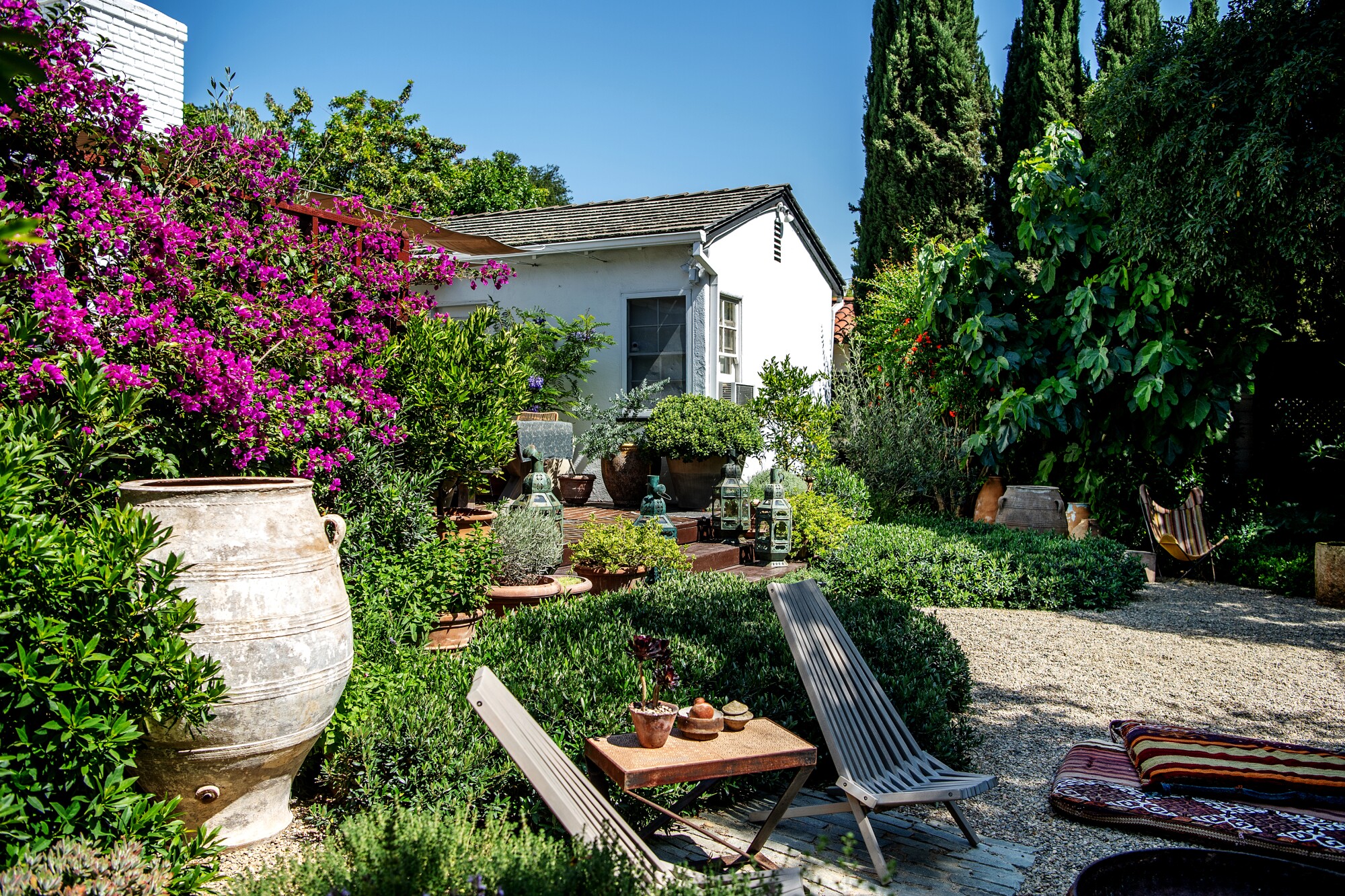
Robbins likes to add planters to break up the plantings.
(Mariah Tauger/Los Angeles Times)
Working with the home’s long-established trees, including Carolina cherry, fig, coastal oak, mulberry and pomegranate, Robbins added young holm oak (Quercus ilex), jacaranda ‘Bonsai Blue’ and multiple olives, some of which are in planters, to add shade and help cool the yard in the years to come. Despite the garden’s neat appearance, Robbins notes that he mulches quite a bit and allows the leaves to decompose to prevent water evaporation and add nutrients to the soil.
Next to the fire pit where the family likes to hang out, he installed a herb garden in a raised bed with easy access to the kitchen. In another thoughtful move, Robbins added vintage pots throughout the garden, many of which he had been collecting over the years and were leftover from landscaping jobs, to help break up the mass plantings. “I’ve always loved pots,” he says. “It takes me back to Europe.“
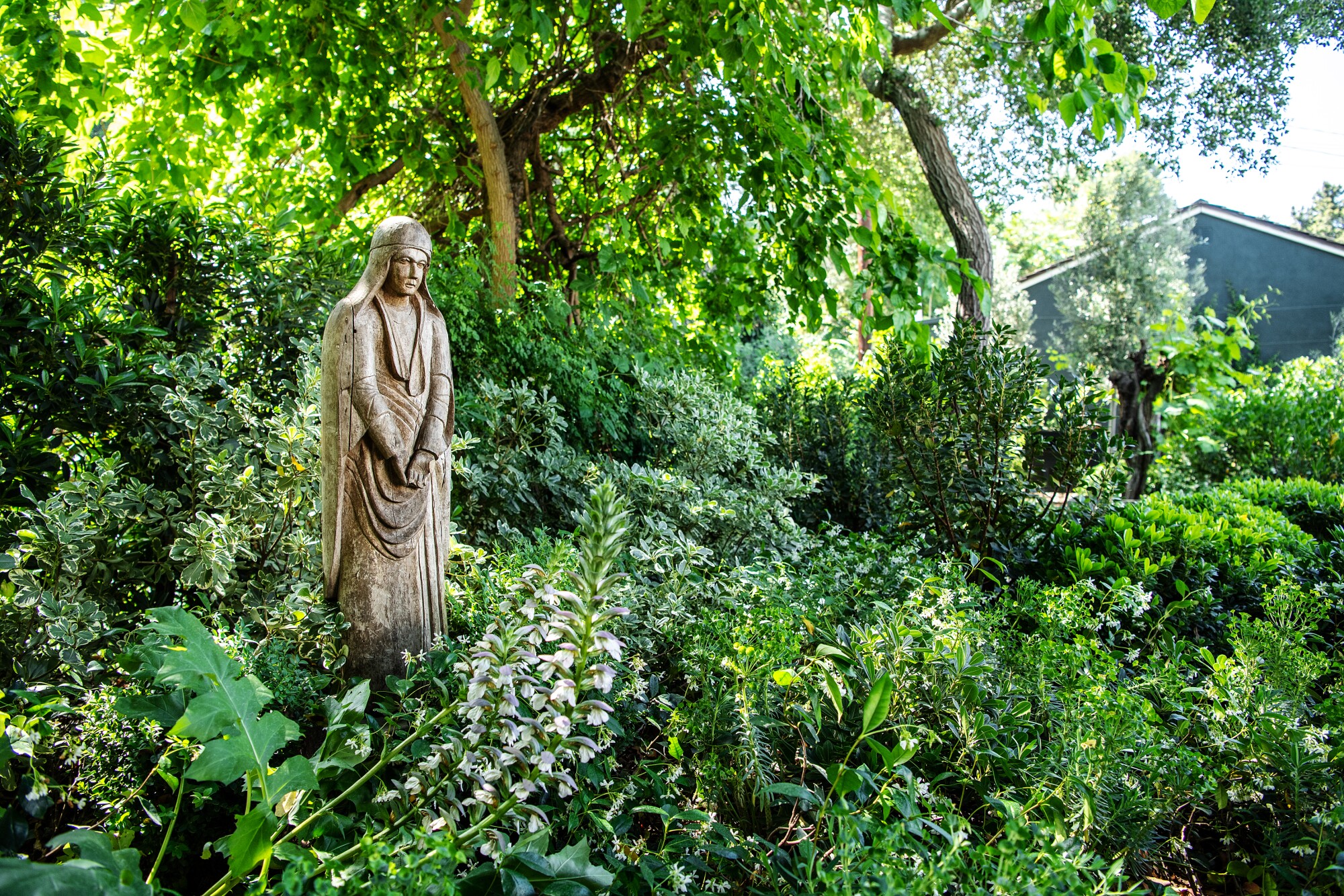
Robbins chose plants based on the garden’s sandy loam soil.
(Mariah Tauger / Los Angeles Times)
The garden is anchored on a deck that serves as an outdoor dining room. Robbins transformed the empty stoop with potted plants that can endure the heat; they are a variety of shapes and sizes, including quick-growing acacia, bougainvillea, citrus, cistus, jacaranda ‘Bonsai Blue,’ Olea europea, Pittosporum crassifolium ‘Compactum’ and santolina. To top it off, he installed a trio of sun sails to provide protection on days when the temperature in Pasadena hits triple digits.
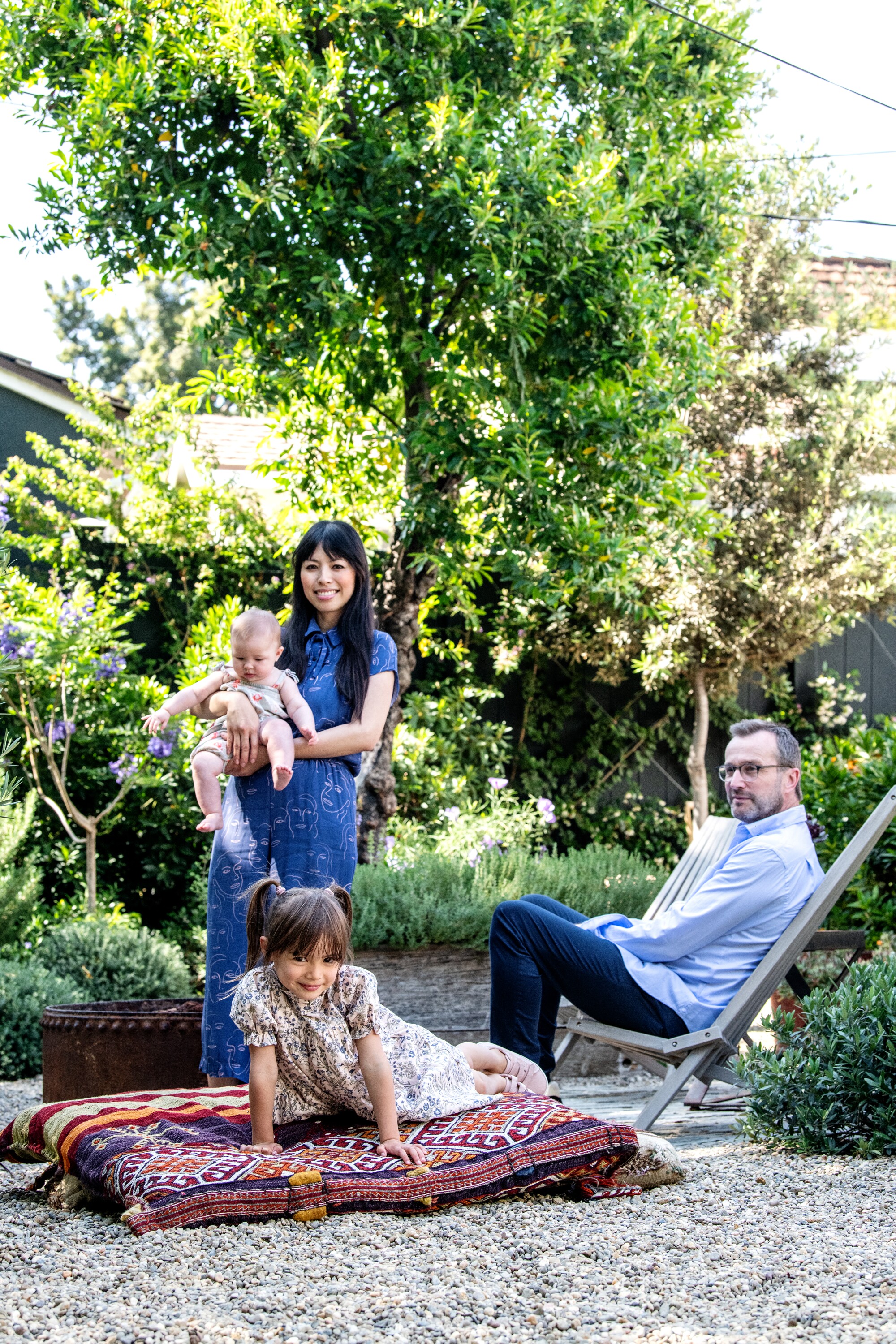
Paul Robbins and his family enjoy the back yard he designed in Pasadena.
(Mariah Tauger / Los Angeles Times)
Although the couple are unable to purchase a home right now in L.A.’s competitive housing market, they consider themselves fortunate to be putting down roots in Pasadena. “We love it here and are hoping we can stay for years,” Robbins says. “I have covered 2,400 square feet, and we enjoy it every day. This weekend we are hosting a family birthday party for 40 people. I can take a lot of the plants with me when I leave.”
And the garden?
“I’ll be passing it on to the next family who lives here.”
Did you tear out your lawn and replace it with drought-tolerant plants? We want to hear from you.
Turf removal tips
Ready to tear out your lawn? Here’s some advice from Robbins before you get started:
- To get rid of Marathon, a popular grass in Southern California because it stays green yearround, rent a sod cotter, turn the grass over and wait two weeks before rototilling the soil. Then, add organic compost and new soil to your yard as needed.
- Install drip irrigation, which is a low-volume watering system.
- Choose plants based on what grows well in your neighborhood and what kind of soil you have. “For example, light, free-draining soils favor plants such as lavenders, salvias, rosemary and westringia. Heavier soils [favor] pittosporums, olive shrubs and agapanthus,” Robbins advises.
- Choose three to five varieties to plant as a group. This will make your yard stand out without complicated maintenance.
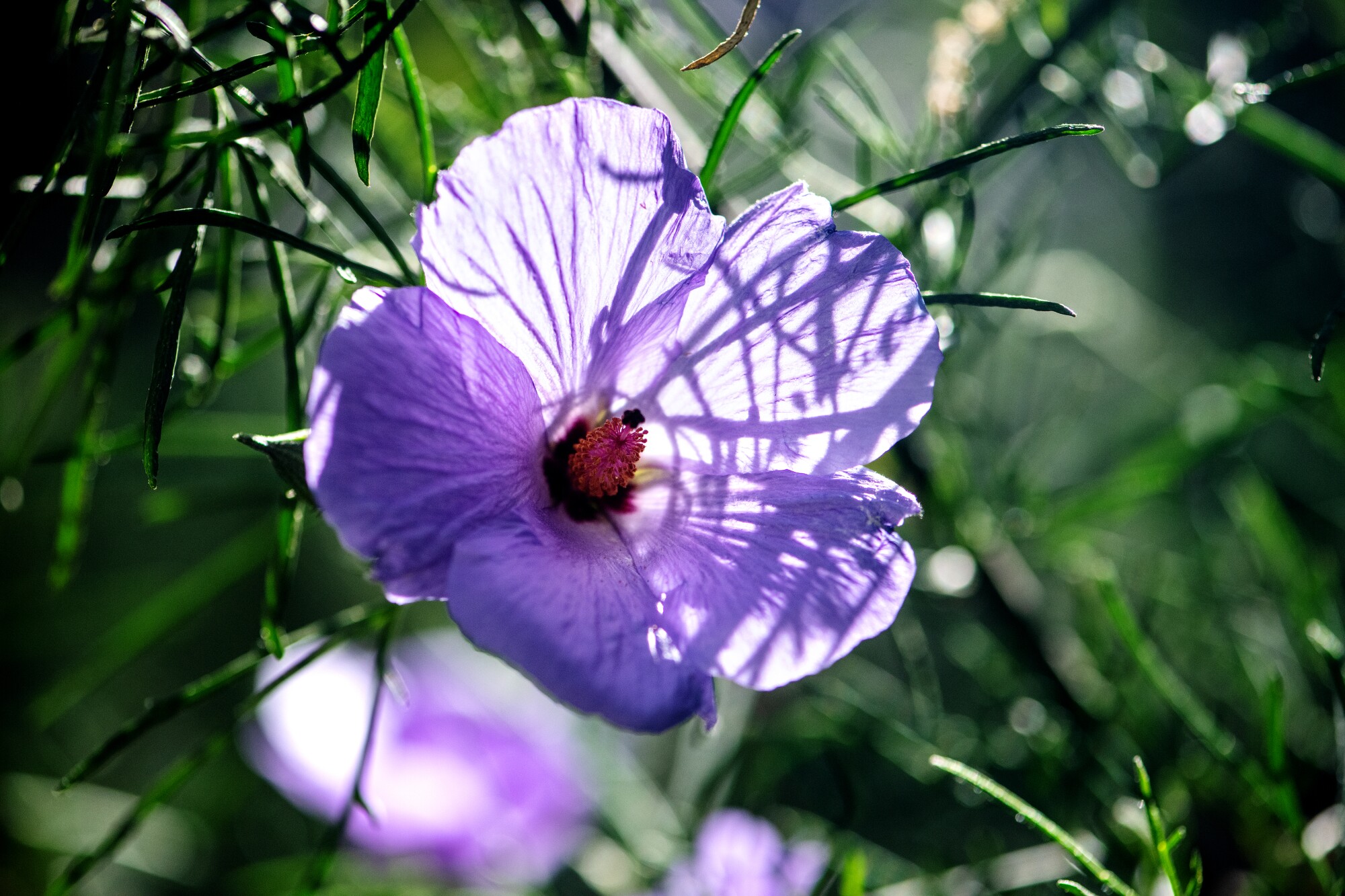
Alyogyne huegelii (Blue Hibiscus).
(Mariah Tauger / Los Angeles Times)
Plants used in this garden
EXISTING TREES
- Carolina cherry
- Fig
- Coastal oak
- Mulberry
- Victorian box, Pittosporum undulatum
- Pomegranate
NEW TREES
- Holm oak, Quercus ilex
- Jacaranda ‘Bonsai Blue’
- Olives
BOUNDARY HEDGES
- Japanese Blueberry, Elaeocarpus decipiens
VINES ON BOUNDARY FENCE
- Honeysuckle
- Jasmine
- Tecomaria
WALL/FENCE SHRUB
- Crossberry, Grewia occidentalis
SHRUBS AND FLOWERS
- Bear’s Breeches, Acanthus mollis
- Arbutus “Oktoberfest”
- Blue hibiscus, Alyogyne huegelii
- Boxwood ‘Green Beauty’
- Silverbush, Convolvulus cneorum
- Euphorbia (spurge)
- Gardenia jasminoides
- Grape vine (table grape)
- Japanese holly, Ilex crenata
- Jasmine, Trachelospermum jasminoides
- Little Ollie, Olea europaea
- “Wheelers Dwarf,” Pittosporum tobria
- Variegated Japanese Mock Orange, Pittosporum variegata
- Rosemary (Tuscan)
- Dwarf coast rosemary, Westringia fruticosa (gray box)
POTTED PLANTS
- Acacia
- Bougainvillia
- Citrus
- Cistus
- Jacaranda ‘Bonsai Blue’
- Olive europea
- Dwarf karo, Pittosporum crassifolium “Compactum”
- Santolina
TABLE PLANTS
- Dorstenia gigas
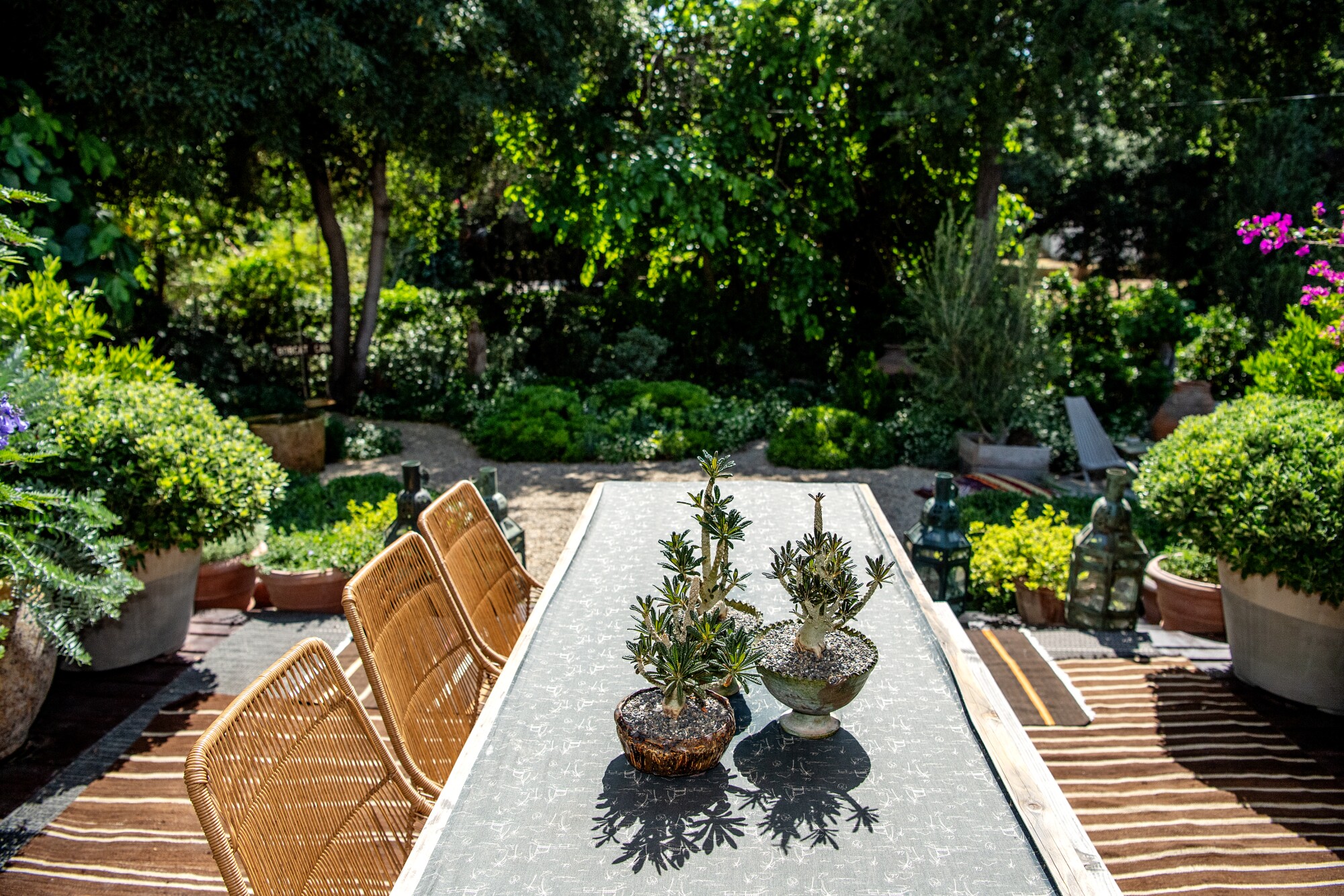
A view of the new garden from the deck. On the table: Dorstenia gigas from California Cactus Center in Rosemead.
(Mariah Tauger / Los Angeles Times)
